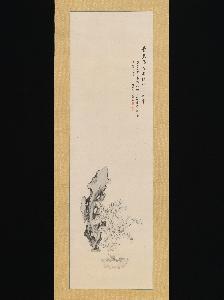Takahashi Sōhei
Takahashi Sōhei
Place: Bungo-Han (Present-Day Oita Prefecture)
Born: 1804
Death: 1835
Biography:
Takahashi Sōhei was a Japanese painter born in Bungo-han (present-day Oita Prefecture), Japan in 1804. He began studying at age nineteen with the Nanga painter Tanomura Chikuden (1777–1835). Sōhei was known for his highly detailed and precise paintings, often depicting landscapes and nature.
Early Life and Training
Sōhei began his training with Tanomura Chikuden in 1822, when the master visited Sōhei's hometown of Kitsuki from Kyoto. Soon thereafter, Sōhei took Chikuden as a teacher and returned with him to Kyoto, where he was quickly recognized as one of Chikuden's most promising students.
Artistic Style
Sōhei's paintings are characterized by their highly individual style, which was influenced by the Nanga school. The Nanga school, also known as literati painting or Bunjinga, is a style of Japanese painting that emerged during the Edo period (1603-1868). It was heavily influenced by Chinese literati painting and calligraphy, which emphasized individual expression and personal interpretation over technical skill. Sōhei's paintings often featured landscapes, figures, and poetry, and were known for their delicate brushwork and subtle color schemes.
Notable Works
Some of Sōhei's notable works include Snowy Landscape, Bamboo in Summer, and Peony. These paintings showcase his mastery of the Nanga style and his ability to capture the beauty of nature. Key Points:
- Sōhei was born in 1804 in Bungo-han (present-day Oita Prefecture), Japan.
- He began studying with Tanomura Chikuden at age nineteen.
- Sōhei's paintings are characterized by their highly individual style, which was influenced by the Nanga school.
- His notable works include Snowy Landscape, Bamboo in Summer, and Peony.
Sōhei's paintings can be found on https://Wikioo.org/@@/D2YHUB-Takahashi-Sohei-Snowy-Landscape and https://Wikioo.org/@@/D32E46-Takahashi-Sohei-Bamboo-in-Summer. More information about the Nanga school can be found on https://Wikioo.org/Art.nsf/O/A@D3CPWR. The Tokyo National Museum also has a collection of Nanga paintings, including works by Sōhei and other notable artists.





